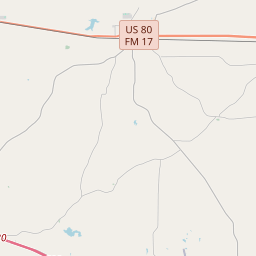Site of Coleman Family Drug Store and Clinic
Historical marker location:






Dr. Walter Jackson Coleman and his wife, Mary Eugenia (DuBose), moved to Texas with their family from Isney, Alabama in 1897. After settling in the railroad town of Mineola, a traveling salesman persuaded Dr. Coleman to invest in the pharmacy business, resulting in establishment of the Coleman Family Drug Store in 1902. Early on, Dr. Coleman developed trust with his patients by making house calls and opening his home to those in need. He often accepted food as payment for his medical treatments in the general custom of the time. His store was well stocked with medicines, some developed by Dr. Coleman and his son, Charlie.
Charlie Coleman, familiar with patent formulas before he graduated from high school, received a pharmacist license in 1912 and helped run the business. In 1933, two of his brothers, Robert and John, both doctors, set up a clinic adjacent to the store, which Charlie took over after their father died in 1937. The clinic closed at the start of World War II when John and Robert joined the armed forces.
After the war, Robert and John practiced medicine in other state, but Charlie continued to manage the Mineola store. His civic contributions included four terms as city commissioner and service as Mayor Pro Tem in 1926. He also served on the Mineola school board, the draft board and the equalization board.
The Coleman Family Drug Store continued to thrive with several family members working here before later pursuing careers in the medical field. It closed in 1964 because of Charlie’s declining health. He passed away on Decembe r9, 1968 and was buried in the Mineola City Cemetery.
(2005)
As one of the most visible programs of the Texas Historical Commission (THC), historical markers commemorate diverse topics in Texas history, including: the history and architecture of houses, commercial and public buildings, religious congregations, and military sites; events that changed the course of local and state history; and individuals who have made lasting contributions to the state, community organizations, and businesses.
Texas has been a major oil-producing state for over a century. The first big oil discovery in Texas was the Spindletop field near Beaumont in 1901, which set off a massive oil boom that transformed the state's economy and made Texas one of the wealthiest states in the country.
In the early 1800s, the region attracted settlers from the United States who were drawn to the lush forests and abundant resources. The first permanent European-American settlement was established in 1846, and it was named Quitman after John A. Quitman, a prominent politician of that time.
During the Civil War, Wood County played a significant role in supporting the Confederacy. Many residents enlisted in the Confederate Army, and the area became a center for military recruitment and training. After the war, the county suffered economically, but with the introduction of the railroad in the late 19th century, the economy began to recover.
Wood County's economy primarily relied on agriculture, with the growth of cotton, corn, and timber industries. The establishment of sawmills and the development of the timber industry brought prosperity to the area. In the early 20th century, the discovery of oil and gas reserves further fueled the county's economic development.
Today, Wood County continues to be an important agricultural and industrial center in Texas. The county's history is evident in its charming small towns, historic sites, and natural beauty. The strong sense of community and appreciation for the region's heritage are still evident today, making Wood County a vibrant and inviting place to visit or live.
Wood County Timeline
This timeline provides a concise overview of the key events in the history of Wood County, Texas.
- 1850: Wood County is established by the Texas legislature.
- 1852: The first courthouse in Wood County is built in Quitman.
- 1860: The population of Wood County reaches 4,867.
- 1875: The railroad reaches Wood County, boosting economic growth.
- 1895: The county seat is moved from Quitman to Mineola.
- 1920: The population of Wood County peaks at 19,109.
- 1930: The Great Depression hits Wood County, causing economic hardship.
- 1958: Lake Holbrook is completed, providing a recreational area for residents.
- 1970: Wood County's population decreases to 12,230.
- 1983: Holly Lake Ranch, a gated residential community, is established in Wood County.
- 2000: The population of Wood County surpasses 37,000.
- 2019: Wood County experiences steady growth and continues to be a thriving community.